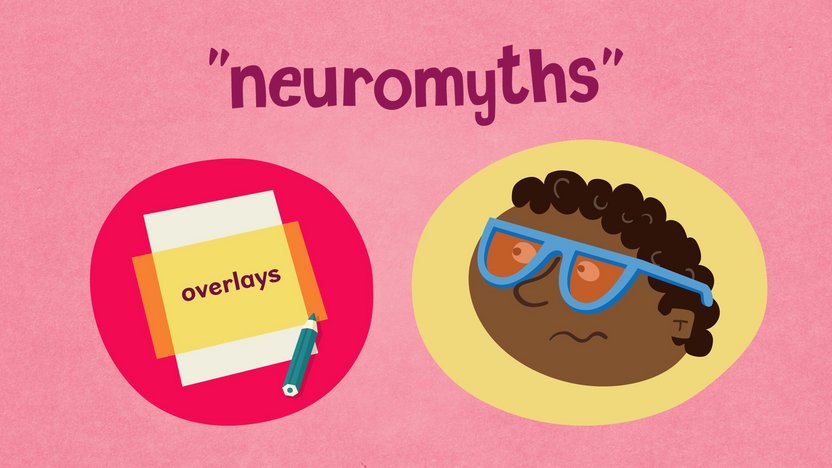Dyslexia and Coloured Overlays
Educational experts, researchers, and medical authorities around the world have found little independent scientific evidence to support the use of eye exercises, vision therapy, tinted lenses or filters as a treatment for dyslexia.

Dyslexia is not a vision based disorder but if children feel a (placebo) benefit from using coloured overlays then there is no harm, but they should never be used as the only form of support and certainly never as a substitute for an intensive program of individualised Structured Literacy.
Research Studies:
UK
1. Ophthalmic Abnormalities and Reading Impairment
- Ingrid Torjesen – Use of coloured overlays and lenses are unlikely to help children with dyslexia, study finds. British Medical Journal.
- Clare Wilson – Forget colour overlays – dyslexia is not a vision problem. New Scientist.
- Alexandra L. Creavin, Raghu Lingam, Colin Steer and Cathy Williams – Ophthalmic Abnormalities and Reading Impairment. Pediatrics AAP Publications.
Dr Alexandra Creavin MBChB(Manch.) NIHR Doctoral Research Fellow NIHR Doctoral Research Fellow at Bristol University.
Research at the universities of Bristol and Newcastle tested 5,822 children and concluded vision problems in children with dyslexia were rare and co-occurred in children without dyslexia. Children aged between 7 and 9 had their reading abilities tested as well as performing a battery of visual tests. The study found that there’s no evidence visual stress is linked with dyslexia. The study’s findings, published in Pediatrics on 1st June, reinforced the argument that coloured overlays and lenses are unlikely to help with reading difficulties in children with dyslexia.
Around 375 000 UK children have dyslexia, and the use of coloured overlays and lenses by such children is common in educational establishments. Parents can spend hundreds of pounds on them, but their effectiveness remains uncertain.
2. A rose-tinted cure: the myth of coloured overlays and dyslexia
- Jeremy Law – The myth that coloured overlays help dyslexic pupils. Tes News (September 2019).
- Jeremy Law – A rose-tinted cure: the myth of coloured overlays and dyslexia (August 2019).
Jeremy Law PhD, Lecturer in Education, University of Glasgow
It is claimed that the use of coloured filters and lenses can alleviate visual distortions for people with dyslexia. These overlays are simple translucent pieces of plastic which add colour to text. But I believe they should not be recommended as a treatment or a form of support for people with dyslexia because there is a lack of convincing scientific evidence supporting their effectiveness.
Despite having been actively investigated over the past 40 years, visual stress still remains unrecognised by the World Health Organisation’s International Classification of Disease, the American Psychiatric Association Diagnostic and Statistical Manual of Mental Disorders, and the American Optometric Association.
Listed as one of the “neuromyths” of education in a Nature Reviews article, the ability of coloured overlays to support the reading of individuals with dyslexia has been widely contested within published research. The current body of research has failed to produce high quality evidence demonstrating that an improvement in reading when a coloured overlay is applied.

3. Irlen Colored Overlays Do not Alleviate Reading Difficulties
Stuart J. Ritchie, Sergio Della Sala and Robert D. McIntosh
Sixty-one schoolchildren (aged 7–12 years) with reading difficulties were assessed by an Irlen diagnostician. A within-subject study design was used to examine differences in reading rate across 3 conditions: using an overlay of a prescribed color; using an overlay of a nonprescribed color; and using no overlay. In a subset of 44 children, all of whom had a diagnosis of Irlen syndrome, a between-group design was also used to test the effects of Irlen colored overlays on a global reading measure. The Irlen diagnostician diagnosed Irlen syndrome in 77% of the poor readers.
No evidence was found for any immediate benefit of Irlen colored overlays as measured by the reading-rate test or the global reading measure. The data suggests that Irlen colored overlays do not have any demonstrable immediate effect on reading in children with reading difficulties.
4. Efficacy of coloured overlays and lenses for treating reading difficulty
- Catherine M Suttle, John G Lawrenson, Miriam L Conway – Efficacy of coloured overlays and lenses for treating reading difficulty: an overview of systematic reviews (April 2018).
Catherine M Suttle PhD, John G Lawrenson PhD, Miriam L Conway PhD
Reviewed four research studies into the effectiveness of using coloured overlays. Three of the four studies concluded that there is insufficient good quality evidence to support the use of coloured overlays or lenses for reading difficulty, while one concluded that, despite research limitations, the evidence does support their use. On balance, systematic reviews to date indicate that there is not yet a reliable evidence base on which to recommend coloured overlays or lenses for the alleviation of reading difficulty.
The report concluded coloured filters should not be recommended until reliable evidence is available to demonstrate clear benefit. There may be some benefit of a placebo effect although if being used as a placebo this should not lead neglecting other interventions.
Australia and New Zealand
5. Learning Disabilities, Dyslexia and Vision
- The Royal Australian and New Zealand College of Ophthalmologists – Position Statement: Learning Disabilities, Dyslexia and Vision.
The Royal Australian and New Zealand College of Ophthalmologists (RANZCO)
Prof Frank Martin, A/Prof James Elder
There is no evidence to suggest that eye exercises, behavioural vision therapy, or special tinted filters or lenses improve the long-term educational performance of people affected by dyslexia or other learning disabilities.
It is important, therefore, that parents understand that dyslexia and other learning disabilities are not disorders of vision and so, visual therapy is misdirected. Scientific evidence shows that behavioural optometry treatments such as eye tracking exercises, vision therapy, weak glasses to relax the focus, and coloured lenses/overlays do not help children read any better.

6. The Role of Vision in Reading
Dyslexia SPELD Foundation (DSF) Literacy and Clinical Services
Treatments such as Irlen lenses are not evidence-based, and therefore, not recommended.
USA
7. Joint statement - Learning disabilities, dyslexia, and vision
- Joint statement-Learning disabilities, dyslexia, and vision – 2009 (reaffirmed 2014).
- American Academy of Pediatrics – Learning Disabilities, Dyslexia, and Vision.
The International Dyslexia Association
Florida Centre for Reading Research
The American Academy of Paediatrics
The American Psychological Association
The American Academy of Ophthalmology
Vision problems are not the cause of primary dyslexia or learning disabilities. Scientific evidence does not support the efficacy of eye exercises, behavioural vision therapy, or special tinted filters or lenses for improving the long-term educational performance in these complex paediatric neurocognitive conditions. Diagnostic and treatment approaches that lack scientific evidence of efficacy, including eye exercises, behavioural vision therapy, or special tinted filters or lenses, are not endorsed and should not be recommended.
8. Reading difficulties and the pediatric ophthalmologist
- Sheryl M.Handler and Walter M.Fierson – Reading difficulties and the pediatric ophthalmologist (December 2017).
Sheryl M.Handler MD and Walter M.Fierson MD
The use of vision therapy has never been shown scientifically to be effective and may prevent the application of effective interventions during the critical period of development when reading disorders can best be remediated.
9. Irlen syndrome: systematic review and level of evidence analysis
- Jordan Da Silva Miyasaka1 , Raphael V. Gonzaga Vieira1 , Elaine Shizue Novalo-Goto1 , Erik Montagna1 , Rubens Wajnsztejn1 – Irlen syndrome: systematic review and level of evidence analysis (2019).
National Library of Medicine (NCBI)
The use of coloured lenses or overlays to ameliorate reading difficulties cannot be endorsed, and that any benefits reported by individuals in clinical settings are likely to be the result of placebo. The data showed high heterogeneity among studies, and lack of evidence on the existence of IS and treatment effectiveness.
